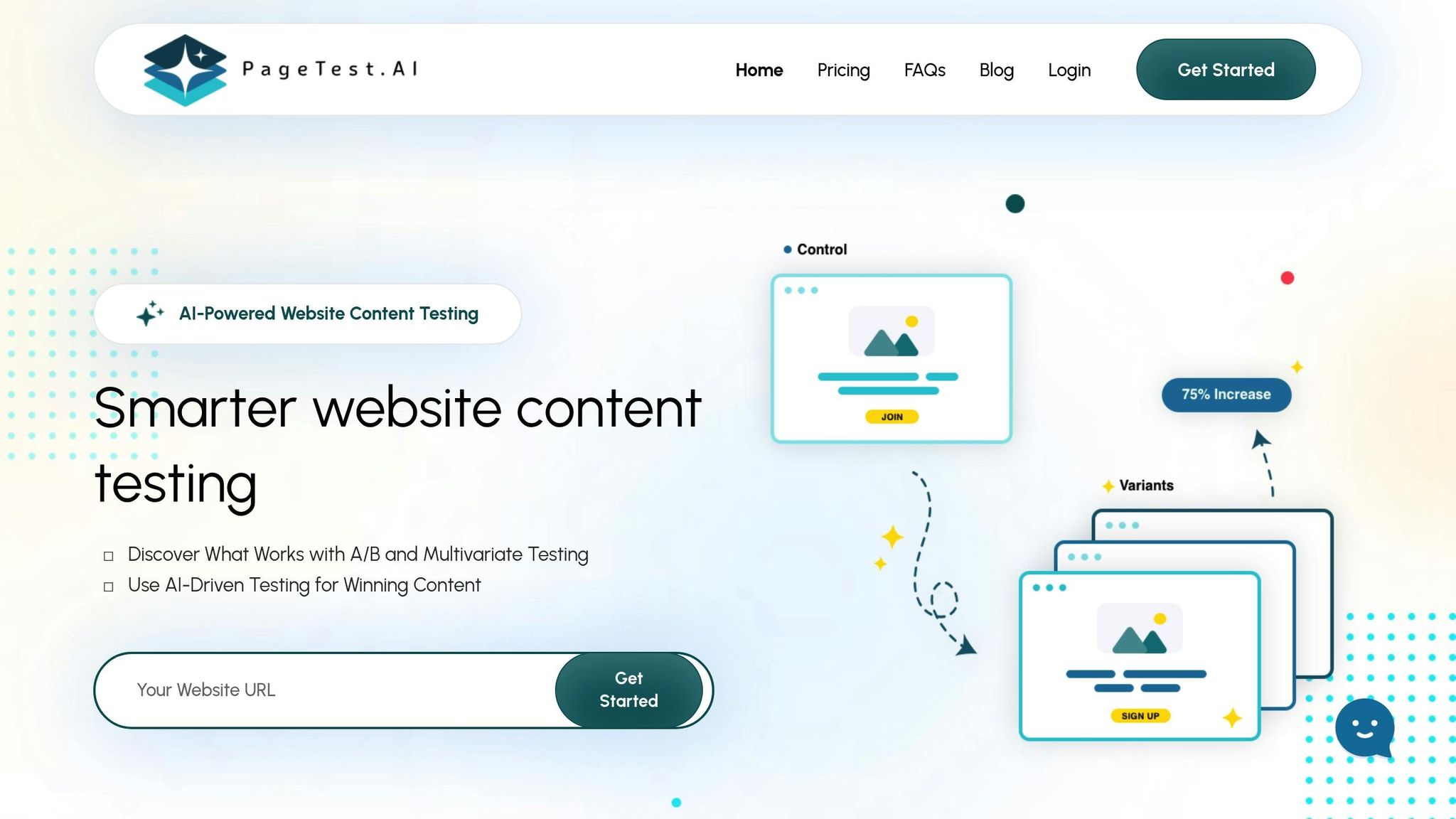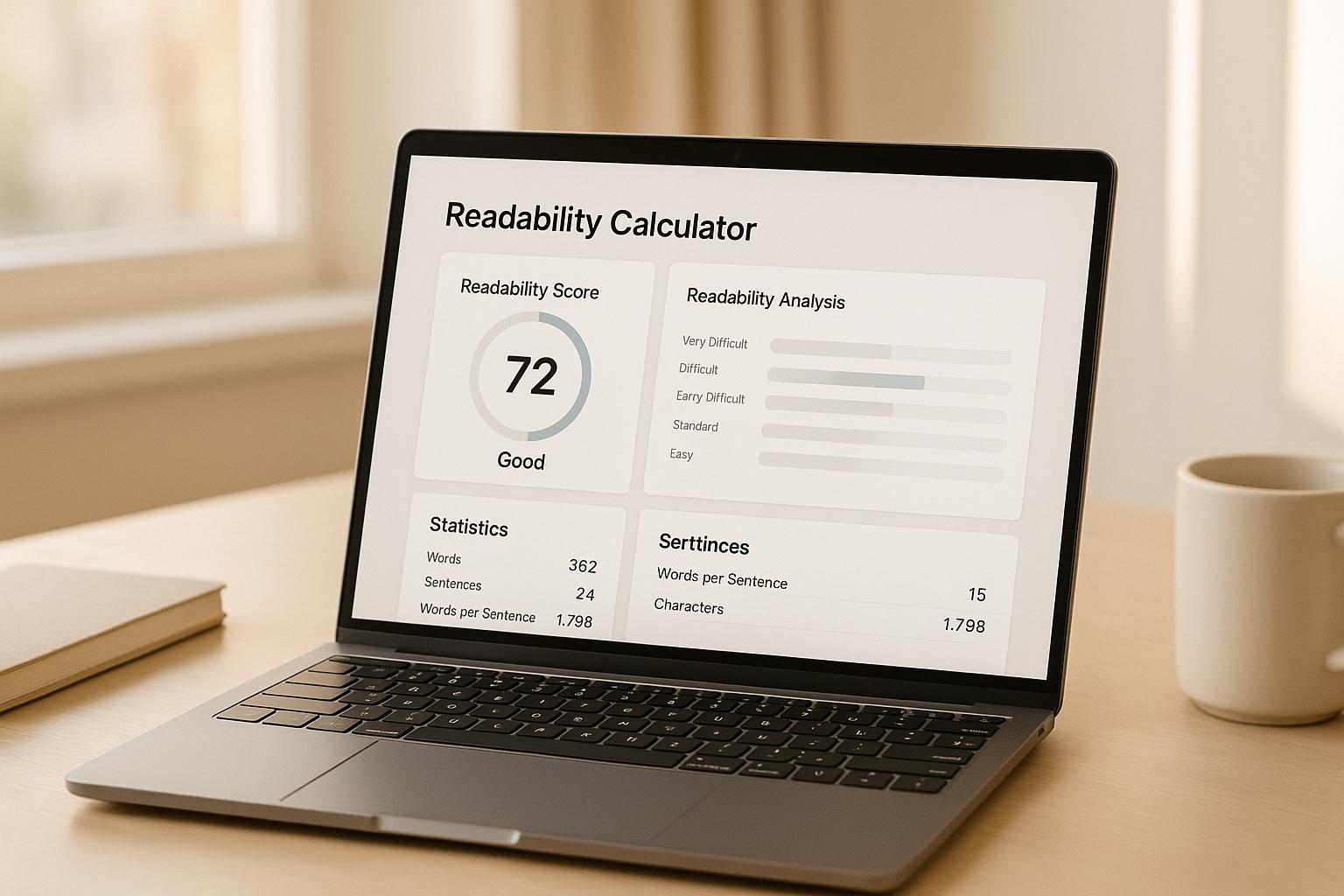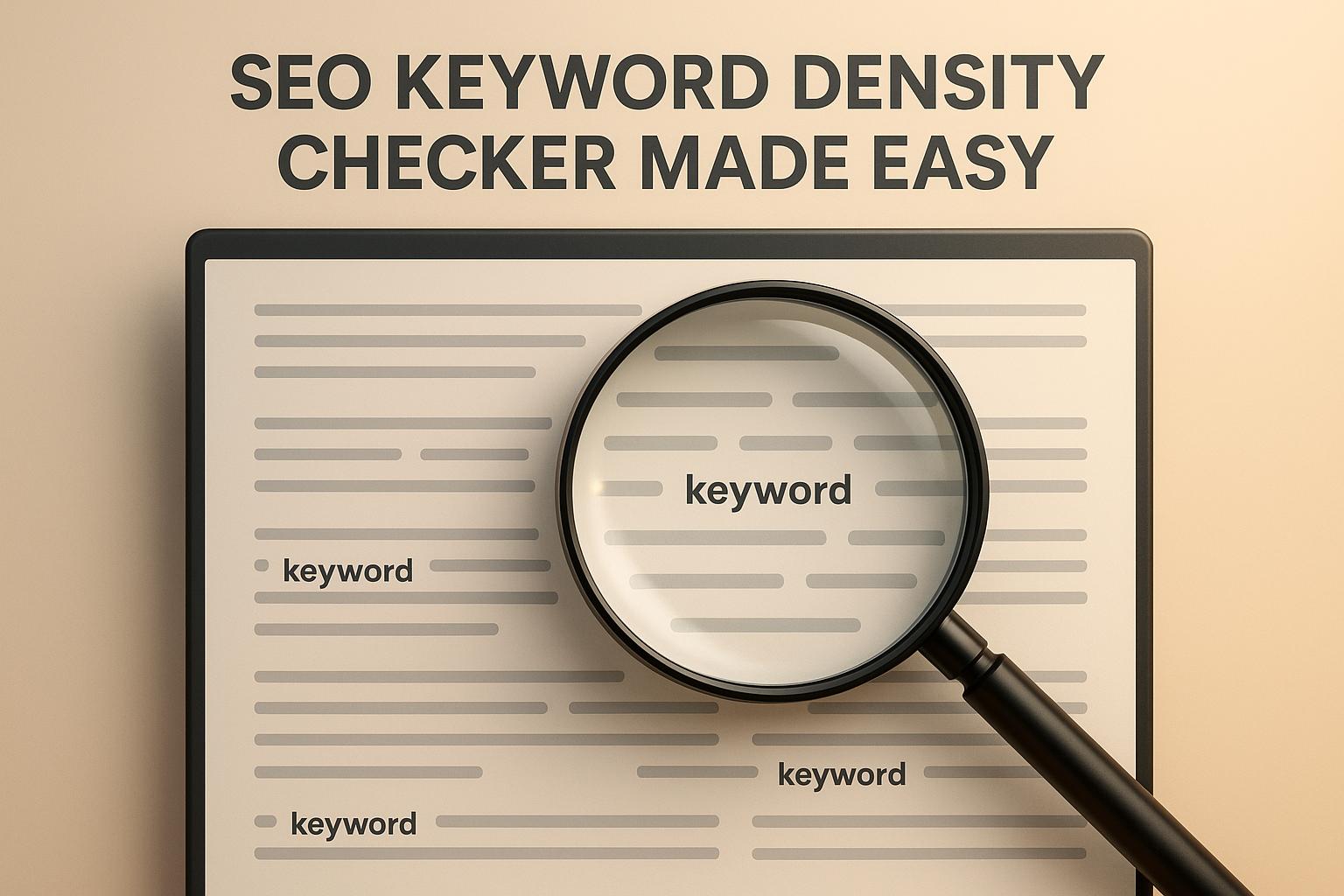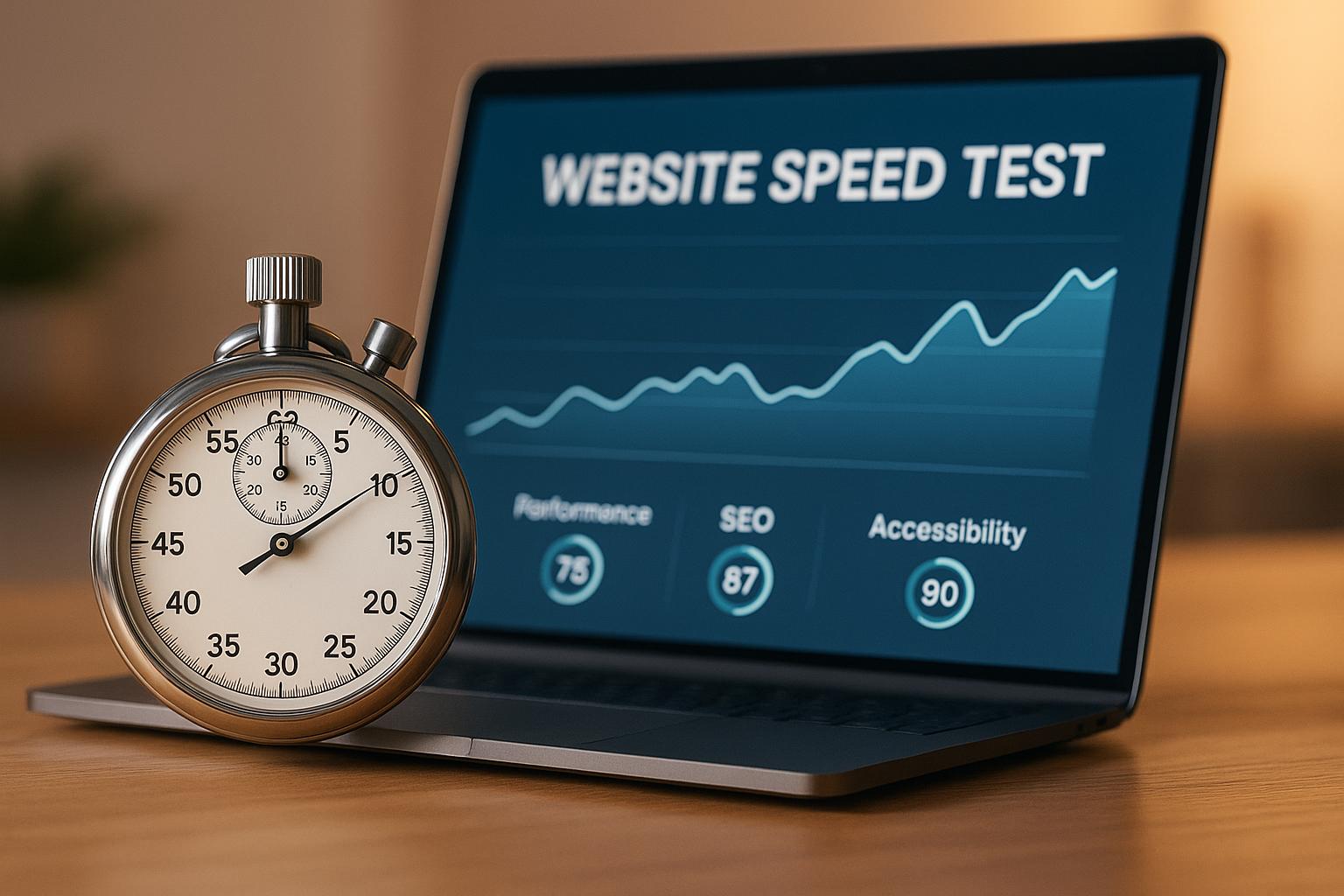

Core Web Vitals and Mobile Conversion Rates

Core Web Vitals and Mobile Conversion Rates
 20-07-2025 (Last modified: 21-07-2025)
20-07-2025 (Last modified: 21-07-2025)
Want higher mobile conversions? Focus on Core Web Vitals.
These Google metrics – loading speed, interactivity, and visual stability – directly affect user experience and sales. A slow site or shifting page elements can frustrate users, leading to higher bounce rates and fewer conversions. Here’s what you need to know:
- Speed matters: A 100ms delay can drop conversions by 7%. Pages loading in under 2.5 seconds perform best.
- Stable layouts win: Avoid layout shifts (CLS) by reserving space for ads and images.
- Quick responses are key: Sites should respond to user interactions in under 100ms (FID/INP).
With mobile-first indexing, poor performance also hurts search rankings. Fixing these issues – like compressing images, reserving layout space, and optimizing JavaScript – can boost conversions by up to 20%. Tools like PageTest.AI help you test and improve mobile performance easily.
Every second counts. Better performance leads to more sales, happier users, and stronger business growth.
The MOST effective ways to improve your Core Web Vitals
Core Web Vitals Explained: What They Mean for Mobile Sites
Core Web Vitals represent Google’s official way of evaluating actual user experiences on websites. These metrics zero in on three critical aspects: how fast your mobile site loads, how responsive it is, and whether its layout stays stable while loading.
“Core Web Vitals is a set of metrics that measure real-world user experience for loading performance, interactivity, and visual stability of the page.”
Since June 2021, Google has included Core Web Vitals in its page experience ranking factors. In simpler terms, a strong performance in these areas can improve both user satisfaction and your site’s visibility in search results.
Historically, Core Web Vitals have focused on three key metrics: Largest Contentful Paint (LCP), First Input Delay (FID), and Cumulative Layout Shift (CLS). However, Google recently introduced Interaction to Next Paint (INP) as a more detailed way to measure interactivity.
Largest Contentful Paint (LCP): How Fast Your Page Loads
LCP measures the time it takes for the largest visible element on a page – like a headline, hero image, or primary content block – to fully load on the screen. For mobile users, who often face slower connections and limited data plans, a fast LCP is essential for creating a good first impression.
Google recommends keeping LCP under 2.5 seconds. Why does this matter? Research shows that increasing load time from 1 to 3 seconds can spike bounce rates by 32%, and stretching it to 6 seconds can cause bounce rates to jump by 106%. For context, Amazon reported a 1% increase in revenue for every 100ms reduction in load time.
Cumulative Layout Shift (CLS): Preventing Page Elements from Moving
CLS measures how much the elements on your page shift around during loading. Imagine trying to tap a button, only for an ad or image to suddenly move it out of place – frustrating, right? This issue is even more noticeable on mobile devices, where screen space is tight and precise taps are critical.
To avoid this, aim for a CLS score of 0.1 or lower. High CLS scores often result from images without defined dimensions, ads that load late, or web fonts causing unexpected text shifts. A stable layout ensures users can navigate your site confidently, even in distracting or fast-paced environments.
First Input Delay (FID): How Quickly Your Site Responds to Users
FID focuses on the time it takes for your site to respond after a user interacts with it – like tapping a button or clicking a link. Quick responsiveness is especially important for mobile users, where delays can lead to frustration. Recently, Google introduced Interaction to Next Paint (INP) as a more comprehensive replacement for FID.
A good FID score is 100 milliseconds or less. If delays exceed this, users might tap multiple times or assume the site is broken, leading to abandoned sessions. Heavy JavaScript that blocks the browser’s main thread is a common cause of poor FID scores.
“Core Web Vitals are a way to measure the user experience of a page…improving them makes for a better user experience, and also, they are now a ranking factor for Google Search as part of the new page experience signals.”
– Conductor
By focusing on these metrics, you can identify why mobile users may leave your site without converting. Each metric addresses a key part of the user experience, directly impacting whether visitors stick around long enough to take action.
Up next, we’ll dive into the challenges mobile sites face when optimizing these metrics.
Most Common Mobile Core Web Vitals Problems
Mobile sites often face performance challenges that hurt their Core Web Vitals scores and, in turn, reduce conversions. These issues lead to higher bounce rates and fewer sales, directly impacting mobile conversion rates.
Slow LCP from Large Images and Server Problems
One of the biggest culprits behind slow Largest Contentful Paint (LCP) on mobile is unoptimized images. When desktop-sized images are served to mobile users, the larger file sizes significantly delay content loading. For instance, a 2MB hero image on a mobile connection can take several seconds to load, leaving users staring at a blank screen instead of your key content.
Slow servers also play a role in poor LCP. Hosting providers with sluggish response times or overloaded servers can add critical delays, especially for mobile users already dealing with slower cellular networks. Additionally, render-blocking JavaScript and CSS further slow down content display. On mobile devices with limited processing power, these delays become even more noticeable.
The impact of these slowdowns is clear. Pages that take over four seconds to load can lose 63% of visitors due to bounce rates. On the other hand, faster load times directly correlate with better conversions: pages loading in 2.4 seconds achieved a 1.9% conversion rate, compared to just 0.6% for pages taking 5.7 seconds or longer. Walmart found that improving page load time by just one second increased conversions by 2%.
High CLS from Moving Content and Missing Size Settings
Content shifting during loading is a major source of poor Cumulative Layout Shift (CLS) scores. This often happens when size attributes are missing for images or videos. Without these attributes, browsers don’t reserve the necessary space, leading to sudden layout changes when the media finally loads.
Another issue is late-loading advertisements, which inject content after the page initially appears loaded, pushing everything below it downward. Similarly, slow-loading web fonts can cause text to first appear in a fallback font, only to shift in size and spacing once the custom font loads. On mobile screens, where space is limited, these shifts can be frustrating – imagine a “Buy Now” button moving just as someone tries to tap it.
These layout issues don’t just annoy users – they hurt business outcomes. For example, Sunday Citizen improved both their LCP and CLS scores, leading to a 4% drop in bounce rate and a 6% boost in conversion rate. Carpe saw even greater results, with a 5% increase in conversions, 10% more traffic, and 15% higher revenue after addressing these problems.
Poor FID from Too Much JavaScript and Bad Code
Excessive JavaScript is a common reason for poor First Input Delay (FID) scores. When browsers process large JavaScript files, the main thread – responsible for handling user interactions like taps and swipes – gets tied up. This delay can leave users feeling like the site isn’t responding to their actions.
Third-party scripts also contribute to this problem. Tools like analytics trackers, chat widgets, social media plugins, and advertising scripts often hog processing time. Many of these scripts are not optimized for mobile, further slowing down the experience.
On top of that, inefficient code can prevent browsers from responding quickly. Mobile users expect instant reactions to their inputs, and any delay can lead to frustration and abandonment.
“0.1 second is about the limit for having the user feel that the system is reacting instantaneously, meaning that no special feedback is necessary except to display the result.” – Jakob Nielsen
To meet user expectations, FID scores should ideally be 100 milliseconds or less. Scores between 100 and 300 milliseconds indicate room for improvement, while anything above 300 milliseconds significantly harms user experience and conversions.
The business impact of improving interactivity is clear. RedBus, for example, optimized their website’s responsiveness (focusing on INP, a related metric) and saw a 7% increase in sales. Even small gains in responsiveness can lead to meaningful results.
Slow loading times, shifting layouts, and unresponsive interactions create a poor experience for mobile users. Up next, we’ll explore proven solutions to address these issues and boost mobile conversions.
How to Fix Core Web Vitals Issues on Mobile Sites
Addressing Core Web Vitals issues can significantly improve mobile site performance and user experience. These steps tackle the underlying problems, setting the stage for better mobile conversions.
Fix LCP: Compress Images, Use Lazy Loading, and Improve Hosting
To improve Largest Contentful Paint (LCP), focus on optimizing images and server performance. Start by choosing the right image formats. For example, WebP images load 1.5 times faster than JPEGs and 2.5 times faster than PNGs. AVIF offers even better compression. Use JPEGs for photos, PNGs for graphics with transparency, and WebP or AVIF for the best mix of quality and size.
Resize images to fit their display dimensions. A common mistake is uploading overly large images, like a 2,000-pixel-wide file, when a mobile screen only needs about 400 pixels. Removing unnecessary metadata from images can also help reduce file sizes.
Implement lazy loading for offscreen images using the loading="lazy" attribute in HTML or JavaScript libraries for more control. Responsive images, created with the <picture> element and srcset attribute, ensure the right size is served based on the user’s device.
For example, in August 2024, Shinola introduced an automated image compression system. This reduced page weight by 50%, sped up image rendering by 10–15%, and shaved 1 second off page load times. These changes directly enhanced user experience and boosted conversions.
If slow server response times are an issue, upgrading your hosting can help. Content Delivery Networks (CDNs) are another great option, as they store images on servers worldwide to reduce load times.
Once LCP is addressed, focus on layout stability to resolve CLS issues.
Fix CLS: Reserve Space for Ads and Media
Cumulative Layout Shift (CLS) occurs when page elements move unexpectedly during loading. To fix this, reserve space for ads, images, and other media by defining width and height attributes. For responsive content like ads, use the CSS aspect-ratio property to allocate space, much like browsers handle images with set dimensions. Adding a min-height CSS rule can help reserve space for late-loading elements like ads or widgets.
If your ads vary in size, set the initial size to the smallest expected dimensions and adjust for shifts when larger content loads. Media queries can also help fine-tune placeholder sizes for different devices. To prevent collapsing reserved spaces, display a placeholder even if no ad is returned.
After improving layout stability, turn your attention to responsiveness by refining JavaScript.
Fix FID: Reduce JavaScript and Optimize Code Loading
First Input Delay (FID) measures how quickly a site responds to user interactions. To improve it, streamline your JavaScript. Use tools like Webpack to split code into smaller chunks and remove unused scripts. Implement lazy loading for non-essential JavaScript, so features like chat widgets or social sharing buttons load only when needed.
Asynchronous loading, done with the async and defer attributes, ensures scripts don’t block HTML parsing. To minimize resource strain, debounce and throttle functions triggered by events like scrolling or resizing. Offload heavy computations to Web Workers, freeing up the main thread for user interactions. Additionally, load polyfills only when necessary for older browsers.
“By following mobile optimization practices, you ensure that your app loads quickly, uses minimal memory, and provides a smooth user experience, even on older or less capable devices.”
- Aliaksandr Levanenia, Senior Software Engineer
These efforts don’t just improve technical metrics – they also influence user behavior. A Deloitte study revealed that a 0.1-second improvement in loading speed can transform the entire buyer journey. Faster ecommerce sites see users stay longer and view up to 8.6% more pages per session.
sbb-itb-6e49fcd
Using PageTest.AI to Improve Mobile Performance

Tackling the challenges of Core Web Vitals on mobile can feel like a daunting task, but PageTest.AI simplifies the process. This AI-powered platform provides businesses with tools to test and refine mobile performance, ensuring every element on a page works toward boosting conversions. Here’s how PageTest.AI stands out as a game-changer for mobile optimization.
Test Mobile Content Without Coding Skills
One of the biggest hurdles to mobile optimization is the technical know-how required. PageTest.AI eliminates this barrier by offering a Chrome extension that lets users easily test website elements like headlines, call-to-action buttons, and product descriptions – no coding required. Simply highlight the element you want to optimize, and the platform generates up to 10 AI-driven variations instantly. This makes it an ideal tool for marketers, small business owners, and anyone looking to improve mobile performance without needing a developer.
For example, PageTest.AI was used to test a call-to-action button on a website. The original text, “Generate my app free,” was compared to an AI-suggested alternative: “Make my app free and easy.” The result? The new version led to 11 clicks versus just 2 clicks on the original, a staggering 297% increase in engagement.
Monitor Core Web Vitals and Conversion Data
Improving Core Web Vitals is important, but understanding how those improvements affect business outcomes is even more critical. PageTest.AI provides detailed tracking of user interactions, such as clicks, scroll depth, time on page, and subsequent page visits, to determine which content variations deliver real results. This data-driven approach ensures businesses can focus on changes that genuinely boost conversions, rather than just improving technical metrics.
With mobile devices accounting for over 60% of global web traffic and bounce rates ranging from 41% to 55%, even small performance gains can make a big difference. Users can tailor their success metrics, choosing to track clicks, time spent on a page, scroll depth, or URL visits, aligning tests with the goals that matter most to their business.
Test Multiple Content Versions Quickly with AI
Speed is everything when it comes to mobile optimization. Research shows that visitors often leave a page after just 2.75 seconds of load time. PageTest.AI addresses this urgency by enabling businesses to test and deploy optimizations rapidly. Its AI-powered system supports multivariate testing, allowing users to experiment with multiple elements – like headlines, buttons, and images – at the same time. This is especially useful in mobile environments, where limited screen space demands that every element performs efficiently.
In another example, a different call-to-action variation tested through PageTest.AI led to a 220% improvement in engagement. These kinds of results highlight how quickly AI-generated variations can uncover high-performing mobile elements, saving businesses weeks or even months of manual testing effort.
Conclusion: Better Core Web Vitals Mean Higher Mobile Sales
Core Web Vitals have a direct impact on mobile revenue. With mobile devices driving over 77% of global retail website traffic and e-commerce sales expected to surpass $8 trillion by 2027, improving mobile performance has never been more important.
Meeting Core Web Vitals thresholds can significantly influence user behavior. Research indicates that users are 24% less likely to abandon a page when these thresholds are met. Even a 0.1-second improvement in load time can lead to an 8.6% increase in pages viewed per session and make users 8.3% less likely to explore competitors’ sites. Combine faster load times with optimizations for First Input Delay (FID) and Cumulative Layout Shift (CLS), and you could see an 8.4% boost in conversions and a 9.2% rise in average order value.
Take Snapdeal, for example. By improving its First Contentful Paint by 3 seconds, the company achieved a 30% increase in conversion rates and reduced bounce rates by 25%. Similarly, Zitmaxx Wonen enhanced its load times by 15%, which led to a 14% increase in conversion rates.
In a mobile-first world, customer satisfaction is a game-changer. Happy customers spend 140% more than dissatisfied ones and are 38% more likely to recommend your store. On the flip side, even a one-second delay can cause a 7% drop in conversions. Every millisecond counts.
These numbers highlight the importance of ongoing performance improvements. Core Web Vitals aren’t something you fix once and forget – they require constant monitoring and refinement. Tools like PageTest.AI simplify this process with AI-powered tests that identify high-performing content variations and track real user behavior. By continuously fine-tuning your site, you can translate these optimizations into lasting business growth, ensuring you stay competitive in the ever-evolving mobile market.
FAQs
How do Core Web Vitals affect mobile conversion rates?
How Core Web Vitals Impact Mobile Conversion Rates
Core Web Vitals are key to improving mobile conversion rates by focusing on faster loading times, better responsiveness, and smoother visual stability. These elements work together to create a more user-friendly experience, which keeps visitors engaged and reduces the chances of them leaving your site too quickly.
When these metrics are optimized, users are more inclined to stick around, interact with your content, and take meaningful actions – like making a purchase or signing up for a service. In fact, many businesses have reported dramatic boosts in mobile conversion rates – sometimes even doubling – after resolving common Core Web Vitals issues.
How can I improve Core Web Vitals to boost mobile conversion rates?
Improving Core Web Vitals on mobile sites is a game-changer for creating a smoother user experience and driving more conversions. Start by focusing on your images – use lazy loading and compression to cut down on page load times. Next, tackle JavaScript and CSS blocking resources to speed up how quickly your site renders. A Content Delivery Network (CDN) can also help by delivering your content to users more efficiently.
Make sure your site is fully optimized for mobile by implementing responsive design and testing it on a variety of devices. Use tools like Google PageSpeed Insights to keep an eye on performance and address issues like slow server response times or render-blocking elements. Even small, steady improvements can lead to noticeably better Core Web Vitals scores – and ultimately, more conversions.
How can PageTest.AI improve mobile website performance to boost conversion rates?
PageTest.AI takes mobile website performance to the next level by using AI to streamline A/B and multivariate testing. It creates tailored content variations – think headlines, CTAs, or product descriptions – and measures their impact with key metrics like clicks, engagement, and user behavior.
By pinpointing what connects best with your audience, PageTest.AI enables data-backed adjustments that boost conversion rates – all without needing any coding skills.
Related posts
say hello to easy Content Testing
try PageTest.AI tool for free
Start making the most of your websites traffic and optimize your content and CTAs.
Related Posts

 06-12-2025
06-12-2025
 Ian Naylor
Ian Naylor
Content Readability Calculator for Clarity
Check your text’s readability with our free calculator! Get Flesch-Kincaid and SMOG scores, plus tips to improve clarity for your audience.

 04-12-2025
04-12-2025
 Ian Naylor
Ian Naylor
SEO Keyword Density Checker Made Easy
Analyze keyword frequency with our free SEO Keyword Density Checker. Ensure your content is optimized and avoid overstuffing penalties!

 02-12-2025
02-12-2025
 Ian Naylor
Ian Naylor
Website Speed Test for Instant Insights
Test your website speed with our free tool! Enter a URL to get instant insights on load time, TTFB, and more. Optimize your site today!
